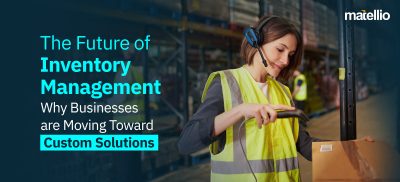
From the last couple of years, IIoT (Industrial Internet of Things) has been consistently spreading its roots across all the industries. Business investments in this arena have tremendously increased and are expected to cross 830 billion dollars by the end of 2020, as per a forecast report by Forbes Magazine. The research also indicates that the logistics, transportation, and manufacturing industries are going to be on the frontline of IIoT spendings with each one of them averaging to 40 billion dollars. In short, we can say that the industrial IoT clock is continually ticking, and organizations who are hesitating to be part of this need to gear up!! But why is there a hesitation in the first place? After researching a bit here and there, we have found some myths in the air regarding IIoT. These misconceptions are causing hesitation in decision-makers, which at times result in a delay or sometimes closing of the project altogether. So, today we have decided to burst this bubble and bring the truth in front of you.
Want to know more? Keep reading.
Myth #1- IIot means a Cloud-Based solution.

Fact- IIot allows the end-user to choose a backend system fitting their needs.
Cloud is a buzzword which mostly hovers around IIoT or IoT discussions. Cloud-based solutions have undoubtedly secured a profound position for themselves in the IIoT marketplace. They are known for providing cost-effective, prevalent infrastructure for data storage and management. Cloud Computing, coupled with machine learning algorithms, can identify trends in operations to predict and prevent upcoming failures. But this doesn’t mean that cloud is a must in IIoT deployments. Even after all the perks, a cloud may carry, these solutions are not the first choice for many industrial organizations. It is because many industrial systems have a limited set of security features, making it prone to cyber security attacks when connected to the internet. In addition to cyber security attacks, increased latency and unguaranteed service uptime, and data privacy are some other concerns of cloud-based solutions. Too many wireless vendors offer cloud-integrated software, which gives the impression of a cloud being an indispensable part of IIoT. The truth of the matter is that even the most versatile IIoT architecture extends this decision to the end-users. It lets them employ a backend system suiting their business needs.
Myth #2- IIot is never safe.

Fact- IoT exposes security issues, but an active security strategy mitigates risk.
Security is a major concern for the manufacturers when IIoT is concerned. Devices connected over cloud pose a huge security threat; however, as the security awareness improvises, IIoT will be as safe as another infrastructure in IT. Many security vendors, enterprises, device manufacturers, and startups are already in the business of IIoT security. Also, the safety standard bodies are into the development of security frameworks and procedures for strengthening the walls of the system. By close collaboration with IoT solution providers and hardware manufacturers, it is possible to develop safe data transmission between IIoT devices. Connecting devices to the internet will always be risky, but an active security strategy can help in mitigating these risks and enhance the value of your IIoT infrastructure.
Myth #3- IIot is expensive.

Fact- IIoT aids companies in building new revenue streams in the long run.
One another myth that a manufacturing organization may take hold of is that IIoT is expensive. The situation is not viewed from an unbiased angle. It is undeniable that investing in IIoT requires finance, but that is just one side of the coin. According to the other side, once IIoT is implemented, actionable insights reaped from IIoT solutions will eventually minimize marketing/ production costs. This results in increased productivity and higher profits. There are some pre-configured systems like Azure IoT Suite and Azure IoT Central, which enables manufacturing companies easy to deploy IoT systems without the need of dedicated IT teams for creating IoT infrastructure.
Myth #4- IIoT will replace people.

Fact- IIoT frees people from monotonous tasks.
IIoT development represents a paradigm shift in business operations and the required skill set. Some of the manual jobs will be automated for increased productivity, but this doesn’t imply that there will be no need for manpower. In contrast, a digital factory is only as good as the people running it. To convert Big Data into BI(Business Intelligence), profiles of a security engineer and data scientist will be critical. Machine operators shall continue to evolve with advanced skills. It is also noteworthy that the IIoT development is going to free a person from monotonous jobs and shift their focus on more valuable tasks. The goal of IIoT is to create a safe and healthy work atmosphere. And, not forgetting that the human brain is behind IIoT and no software is good enough to replace humans. Therefore, rather than seeing it as an employment threat, view it as a road to the future.
Myth#5- IIoT is for big fish only.

Fact- IIoT is suitable for companies of any size.
Many feel that IoT is only suitable for large enterprises that can afford the effort and time required for implementing it. The truth is that a company of any size can implement IoT owing to the recent changes. IoT has now become easy to implement and highly cost-effective. One such name justifying this is Azure IoT, an open-source software. Azure IoT makes it flexible for small and medium scale organizations to avail IoT in their manufacturing without the need of dedicated IT teams for building IoT infrastructure. Hence, it won’t be wrong if we say that the potential benefits a manufacturer reap by using IoT overpower any concerns about time or cost.
Summing Up!
IIoT is growing progressively all because of its ability to transform the Industrial sectors in accordance with both the vendors and consumers. However, to avail of its maximum potential, an organization needs to clear the clouds of misconception and take a step forward. Companies have to understand the value the connected devices deliver by leveraging IIoT solutions. Having said that, it is not too far when manufacturers will realize the perks of IIoT solutions. Liked the article, or perhaps you have something to say? We, at Matellio, are open to suggestions. Comment in the box below and let us know what you think about this Myth vs. Fact Read. Happy Bursting!



